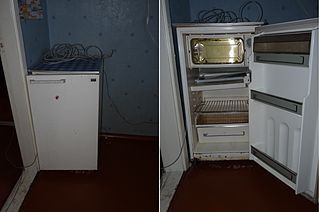From Guest Blogger Adrian Humphreys: The Environmental Impact of Appliance Disposal vs. Repair

Repairing a broken appliance can be surprisingly economical. In fact, there are several websites available with self-repair advice for many common appliance problems.Oftentimes, simple household tools and a little mechanical knowledge are all it takes to fix the problem. The solutions are very easy and most appliance owners can perform the repairs themselves.
If self-repair is not an option, consulting with a technician can save time and money. A technician can check the appliance and determine if it is repairable. Additionally, the technician will quote the cost of the repair before going forward. After that, a simple comparison between the costs of the repair and a new appliance can help with the decision.
Despite the obvious high cost of new appliances, purchasing something new has other drawbacks. Disposing of an appliance has significant negative impacts on the environment. Many appliances contain hazardous materials that can leach into the soil and atmosphere over time. Additionally, the materials used in most large appliances are not biodegradable and contribute significantly to the size of landfills. By maintaining current equipment and not contributing to the production of new appliances, buyers can ensure less waste in years to come.
The Toxicity Characteristic Leaching Procedure (TCLP) measures the impact of hazardous waste in the soil. When soil becomes contaminated, toxic chemicals can impact local plant life and water supplies. There are many common household appliances and gadgets that violate the TCLP guidelines for disposal. These include television and computer monitors (CRT and LCD), cordless and mobile phones, central processing units (CPUs), laptops, microwaves, VCRs and DVD players, radios, and printers. Many of these products contain hazardous substances such as antimony, copper, chromium, mercury, lead, and nickel.
While soil contamination is of great concern, appliances with ozone depleting substances are perhaps the most volatile when it comes to disposal. Air conditioners, refrigerators, freezers, and dehumidifiers all contain toxic foam insulation and refrigerants. Refrigerants may contain chlorofluorocarbons (CFCs) and hydrochlorofluorocarbons (HCFCs).
Many people think HCFCs are safe since they were touted as the solution to CFCs. However, many governments have long term agreements to ban HCFCs in the years to come. HCFCs were developed in the 1980s as a replacement for CFCs in refrigerants. Yet, HCFCs also contribute to the destruction of the stratospheric ozone layer. HCFCs were chosen as a replacement because their molecular structure is less stable and they tend to dissipate faster than CFCs. Despite this, they are still considered volatile organic compounds (VOCs).
Additionally, refrigerants must be removed before disposing of an appliance. The chemicals in refrigerants are very dangerous and can cause physical harm. Therefore, a professional must be consulted to remove the refrigerant. Even after disposing of the refrigerants, appliance owners should be aware that large appliances cannot be disposed of through normal means of trash collection. Often the local utility company, an appliance company, or government office must be consulted to determine if there are local recycle programs or disposal requirements.
With all this evidence it is easy to see why trashing an old appliance has great environmental costs. Even replacing an old appliance with a more energy efficient product is disadvantageous. It is very likely anything purchased in the near future could still have a significant negative impact on the environment.
It is important for appliance owners to weigh the positives and negatives of appliance repair versus disposal. Perhaps most importantly, consumers should take into account the proper disposal methods before discarding an old appliance. With proper consideration of all the contributing factors, appliance owners can be assured they are making the right decision.
For further advice on whether you should have your appliance fixed or replaced, speak to Domex appliance repairs – the leaders in appliance repair services.
